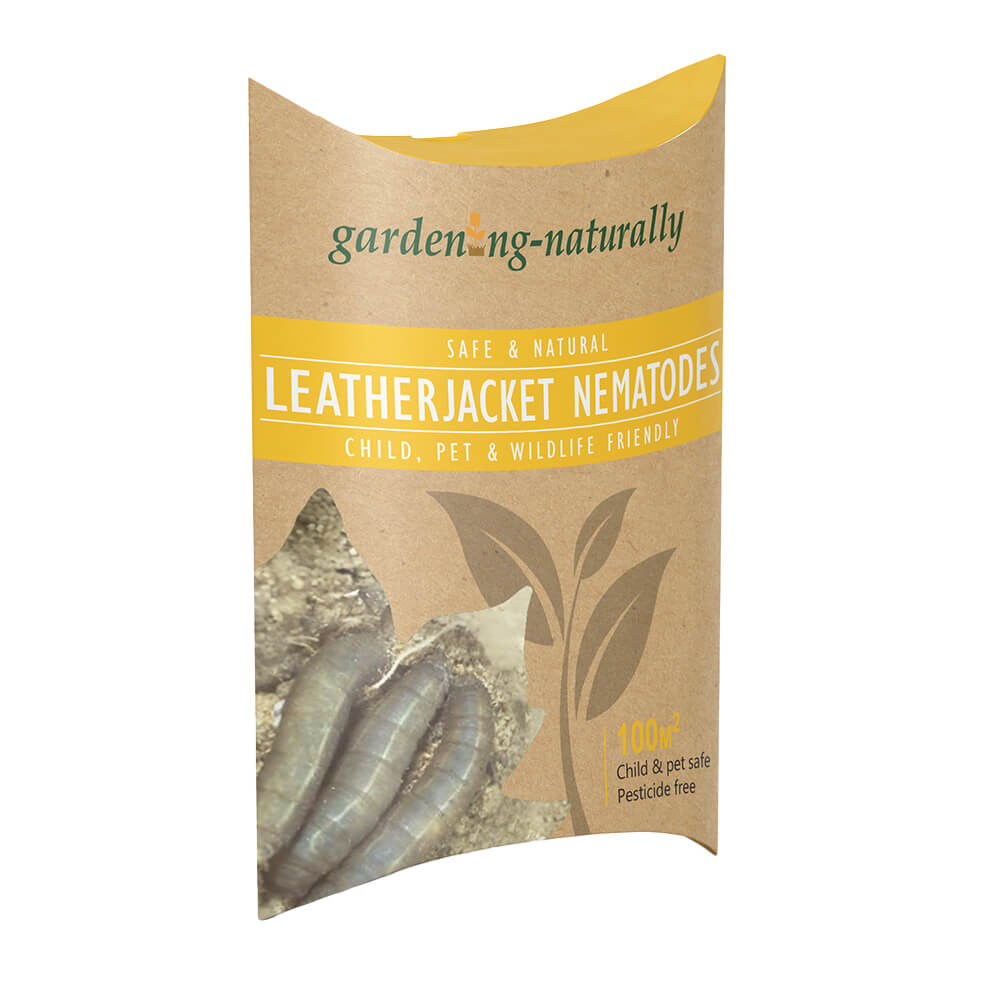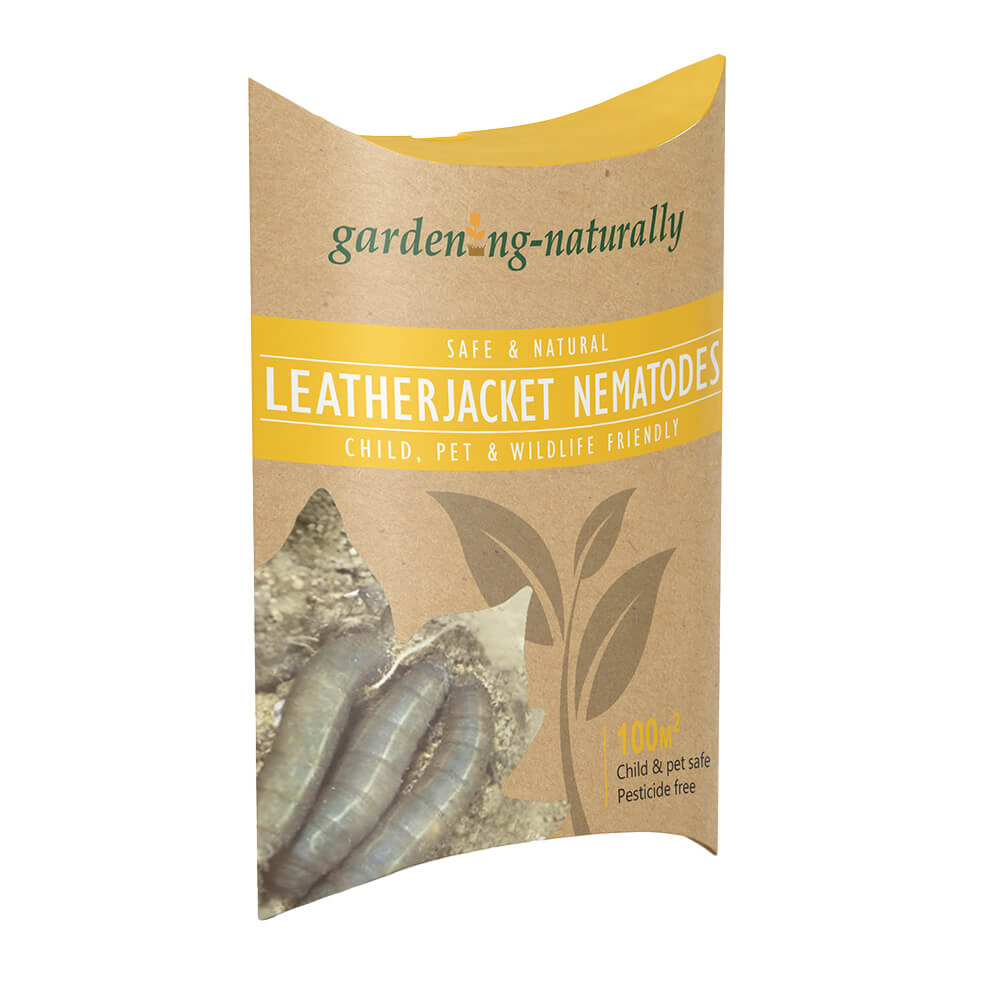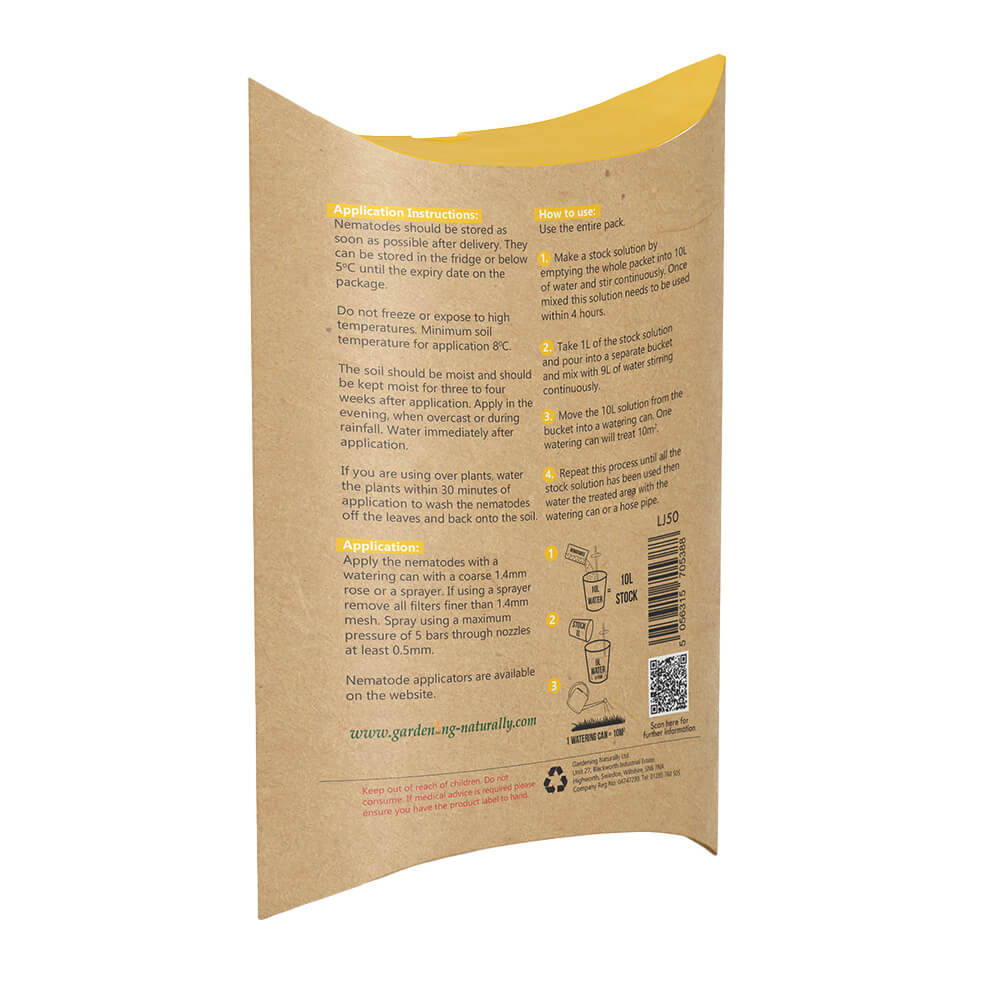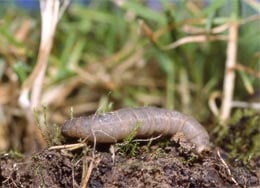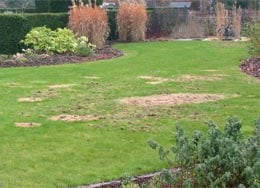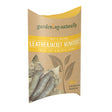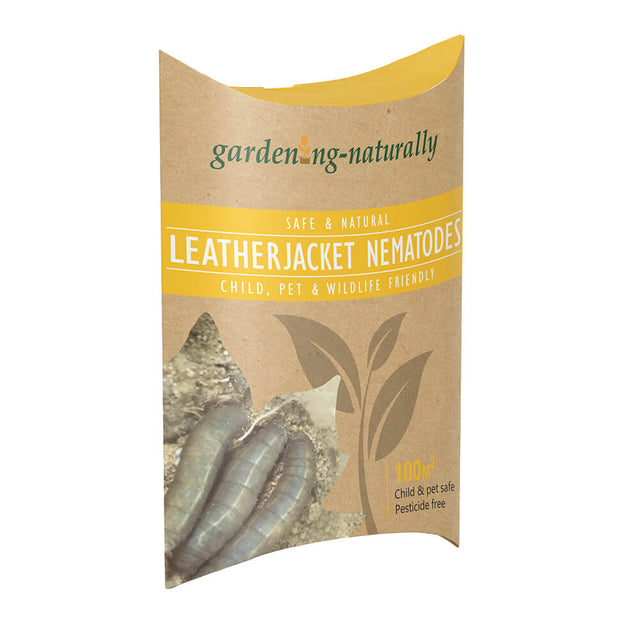Nematodes for Leatherjackets 100 sq.m Gardening Naturally
Nematodes for Leatherjackets 100 sq.m Gardening Naturally is backordered and will ship as soon as it is back in stock.
If you notice yellowing grass, thinning turf or lawn that lifts like loose carpet, the cause may be leatherjackets, the larvae of crane flies (daddy long legs). These soil-dwelling pests feed on grass roots and can leave lawns weak and patchy. Leatherjacket nematodes offer a biological lawn treatment that targets these larvae directly in the soil.
Leather Jacket Nematodes for Controlling Crane Fly Larvae
Leather jacket nematodes are microscopic organisms that actively seek out leatherjackets in the soil. This product contains Steinernema carpocapsae, a species widely used to control soil-based insect pests. Once applied, the nematodes move through the soil, find the larvae and naturally reduce their activity, helping restore the health of grass roots.
When to Apply Leatherjacket Nematodes for Lawn Protection
The most effective times to apply leatherjacket nematodes are late August to October when crane fly eggs have hatched and larvae are feeding near the soil surface, and again in March to April if lawn damage continues after winter. Applying at these times maximises control and reduces further damage through the growing season.
This pack treats 100 sq.m. You can find a larger pack of nematodes on this listing.
How to Apply Leatherjacket Nematodes to Your Lawn
- Pre-water the area to moisten the soil.
- Mix the nematodes with water following the product instructions.
- Apply using a watering can or hose-end sprayer, distributing evenly across the lawn.
- Water immediately after application to help the nematodes move into the soil.
- Maintain soil moisture for at least 7 days after application.
This treatment is safe to use around pets, children, pollinators and other wildlife.
Storage and Shelf Life of Nematodes
- This is a live biological product and must be stored in the refrigerator upon arrival.
- Nematodes typically have a shelf life of around 2 weeks.
- Due to their perishable nature, returns are not accepted.
Frequently Asked Questions
What area does one pack of Leatherjacket Nematodes treat?
This 100 sq.m pack is suitable for treating a medium-sized lawn. For larger lawns or heavier leatherjacket infestation, apply a second treatment or use a larger pack.
When is the best time to apply Leatherjacket Nematodes?
Apply in late August to November when crane fly eggs have hatched and larvae are active near the surface. A follow-up treatment in March or April may help tackle any larvae that survived winter.
How do you apply these nematodes?
Mix the contents with water according to the instructions, then apply with a coarse-rose watering can or hose-end sprayer. Water the lawn immediately afterward to help the nematodes move into the soil.
What soil conditions improve nematode effectiveness?
Nematodes perform best in moist soil with a temperature above 10°C. Keep the treated area damp for at least 7 days after application.
How can I identify if leatherjacket larvae are present?
Common signs include yellowing grass, bare patches, spongy turf and birds pecking at the ground. Grey-brown, legless larvae (2–3 cm long) may be found just below the soil surface.
